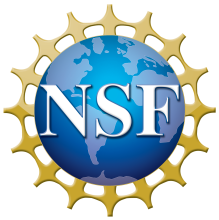
Local Observations from the Seasonal Ice Zone Observing Network (SIZONet) and Alaska Arctic Observatory and Knowledge Hub (AAOKH), Version 2
Data set id:
ELOKA031
DOI: 10.7265/jhws-b380
This is the most recent version of these data.
Version Summary
Version Summary
Data set title and citation were updated, to account for the inclusion of new observers.
Overview
The Seasonal Ice Zone Observing Network (SIZONet) and the Alaska Arctic Observatory and Knowledge Hub (AAOKH) share the Local Observations Interface, which allows access to observations of sea ice, weather, wildlife and community activities collected since 2006 by Iñupiaq and Yup'ik sea ice experts and community members in several communities along the northern and western coasts of Alaska. The SIZONet web interface, which transitioned to AAOKH in 2015, provides access to a database of local observations spatially referenced around Alaska coastal communities. The database brings together two distinct knowledge systems of western science and Indigenous Knowledge. As an archive and instruction tool, the interface offers collaborating opportunities for researchers and local observers. Since it is designed to change in response to the evolving nature of the observations, the database provides a framework for researchers to track and compare specific climatic, environmental and ecological features, and events across geographic locations and over time. The goal of this project is to document and share Indigenous Knowledge alongside western scientific data in the context of changing sea ice and environmental conditions. In documenting local environmental changes, including sea ice conditions, records may offer insight into how those changes affect community and cultural activities. Arctic coastal communities have long recognized that sea ice conditions are not what they once were: the ocean is freezing later in the fall and ice is melting earlier in the spring, shore-fast ice is less stable, there is far less thick multiyear ice, and environmental conditions overall are less predictable. To view the observations in the database, visitors must agree to the Use Agreement and enter as a Guest. Members of the participating Alaska communities can log in as a Registered User for a more robust use of the interface. More information about AAOKH, project administration, and context for the observations can be found at https://arctic-aok.org/.
Parameter(s):
ANIMALS/VERTEBRATES
BIRDS
COASTAL
Community-Based Monitoring
Environmental Features & Use
FISH
Indigenous Knowledge
MARINE ENVIRONMENT MONITORING
MARINE MAMMALS
MARINE OBSTRUCTIONS
OCEAN CURRENTS
Place Names
POLYNYAS
SEA ICE
SNOW/ICE
Trails
WEATHER EVENTS
Platform(s):
GROUND-BASED OBSERVATIONS
Sensor(s):
ANEMOMETERS
THERMOMETERS
VISUAL OBSERVATIONS
Data Format(s):
Not Specified
Temporal Coverage:
- 1 January 2006 to present
Temporal Resolution:
Not Specified
Spatial Resolution:
- Not Specified
Spatial Reference System(s):
Not Specified
Spatial Coverage:
- N:71.3S:59.87E:-156.74W:-171.7
Blue outlined yellow areas on the map below indicate the spatial coverage for this data set.